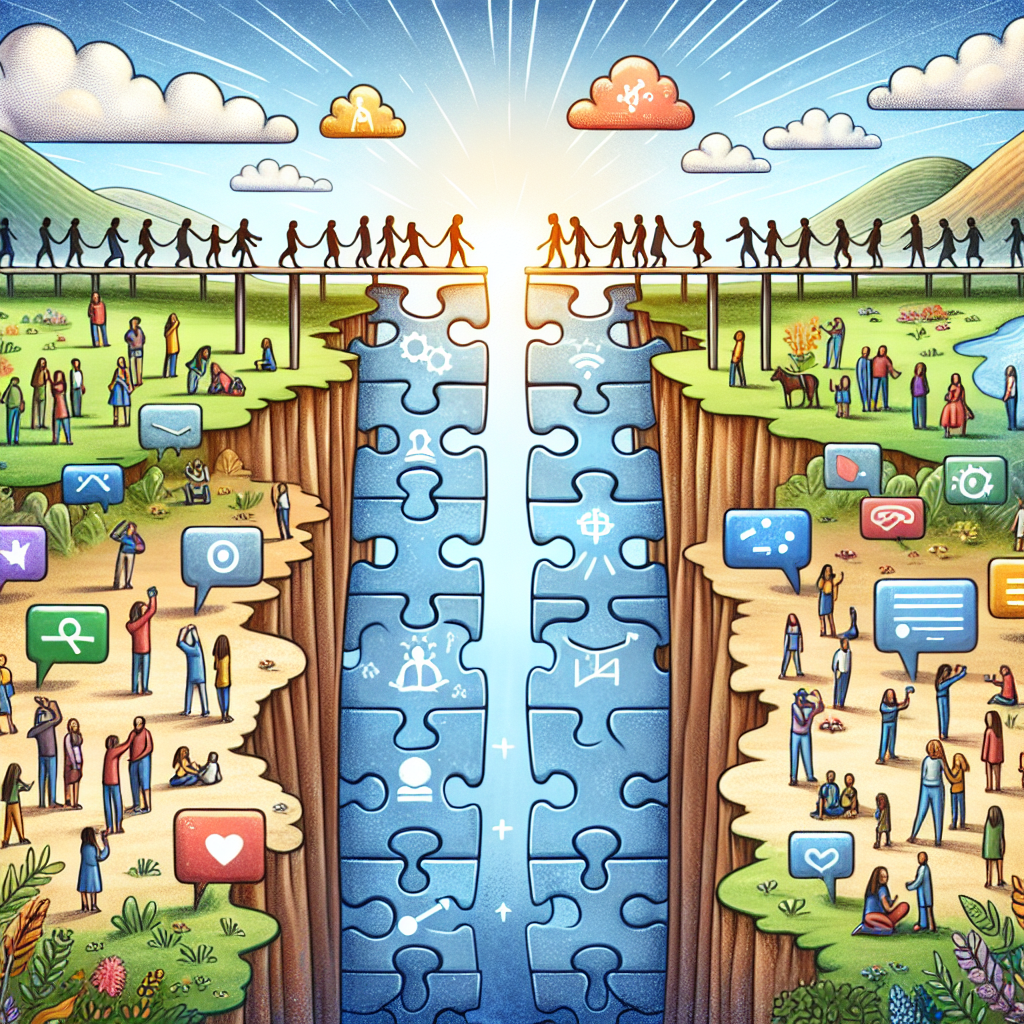Introduction
In our rapidly globalizing world, bridging cultural divides has become more vital than ever. Effective communication fosters understanding, empathy, and collaboration among people from varied backgrounds. However, communicating across cultures can often lead to misunderstandings due to differing social norms and cognitive frameworks. This is where social cognition comes into play. In this article, we will explore Bridging the Gap: How Social Cognition Can Enhance Communication in Diverse Settings, shedding light on how an understanding of cognitive processes can improve interactions and relationships among people from different cultural contexts.
Understanding Social Cognition
What is Social Cognition?
Social cognition refers to the mental processes that people use to make sense of themselves and others in social contexts. It encompasses understanding emotions, intentions, and behaviors, as well as recognizing social norms and cultural differences. By grasping these ideas, one can tailor their communication style to better resonate with diverse audiences.
Key Components of Social Cognition
- Schemas: Cognitive frameworks that help organize information. They guide expectations and interpretations of social interactions.
- Attribution Theory: The process of inferring the causes of people’s behavior, which can differ significantly across cultures.
- Social Perception: Understanding how context can influence interpersonal interactions.
Why Social Cognition Matters in Diverse Settings
Cognitive differences can lead to misinterpretations and conflicts. Understanding how social cognition operates enables us to bridge these divides. For instance, cultures vary in their emphasis on individualism versus collectivism, impacting communication styles, especially in conflict situations.
Bridging the Gap Through Practical Strategies
1. Developing Cultural Intelligence (CQ)
What is Cultural Intelligence?
Cultural Intelligence (CQ) is the capability to function effectively across various cultural contexts.
Case Study: The Global Workforce
Consider a multinational corporation, XYZ Corp., that sought to enhance collaboration within its diverse team. They implemented CQ training, focusing on social cognition principles. The results were clear: teams that underwent this training reported 30% higher engagement levels and 25% more successful project outcomes.
Why It Works: By training employees in social cognition, they learned to appreciate different communication styles, thereby fostering a more inclusive workplace culture.
2. Active Listening
The Power of Listening
Listening is more than merely hearing words. It involves understanding context and feeling the emotions behind those words. Active listening promotes empathy and validation.
Case Study: Conflict Resolution in Community Settings
In a city project aiming to resolve tensions between residents of varying backgrounds, community leaders implemented active listening workshops. Participants noted a 40% increase in mutual understanding and a significant reduction in conflicts.
Analysis: These workshops underscored how social cognition—understanding emotional cues and motivations—can lead to more successful resolutions.
3. Non-Verbal Communication
Understanding the Unspoken
Non-verbal cues vary vastly across cultures and can enhance or hinder communication. Understanding these differences can improve interactions.
Table: Common Non-Verbal Misinterpretations
| Gesture | Culture A (e.g., Western) | Culture B (e.g., Eastern) |
|---|---|---|
| Eye Contact | Sign of confidence | Possible disrespect |
| Nodding | Agreement | Can mean ‘I don’t understand’ |
| Personal Space | Close proximity is normal | Space is respected |
Importance: Recognizing these nuances is crucial for maintaining respectful and effective communication in diverse settings.
4. Empathy and Perspective-Taking
Cultivating Empathy
Empathy goes beyond understanding; it involves sharing and validating others’ feelings.
Case Study: Education Sector Improvements
An educational initiative in a culturally diverse school district encouraged teachers to adopt perspective-taking exercises. Following this program, teachers reported a 50% decrease in behavioral issues.
Why This Matters: Empathizing with students’ backgrounds helped teachers adjust their approaches, demonstrating how social cognition fosters environments of respect and understanding.
5. Flexibility in Communication Style
Adapting Your Approach
Different situations may require different communication styles. Being adaptable can significantly ease misunderstandings.
Case Study: Business Negotiations
In international business dealings, flexibility in communication styles has proven beneficial. A tech company negotiating with partners from Japan adopted a more formal approach, respecting traditional Japanese business etiquette. This adaptability resulted in a successful merger.
Key Takeaway: Flexibility in communication reinforces social cognition by ensuring that all parties feel respected and valued.
Conclusion
As we navigate an increasingly interconnected world, the importance of Bridging the Gap: How Social Cognition Can Enhance Communication in Diverse Settings cannot be overstated. By integrating cultural intelligence, active listening, non-verbal communication awareness, empathy, and flexibility into our interactions, we can create meaningful connections that transcend cultural barriers.
Encouraging Action
Whether you are a leader in a corporate setting, a teacher, or simply engaging socially, applying these principles can enhance your communication skills. Explore how social cognition affects your interactions today, and take steps to bridge those gaps.
FAQs
-
What is social cognition?
- Social cognition refers to how we perceive and interpret social interactions and behaviors, including our understanding of emotions and intentions.
-
How does social cognition relate to communication?
- Understanding social cognition can help tailor communication styles to effectively engage individuals from diverse backgrounds.
-
What are some practical ways to enhance cultural intelligence?
- Engage in cultural training, practice active listening, and adapt your communication style to fit different cultural contexts.
-
Why is empathy important in diverse communication?
- Empathy allows individuals to understand and respect different perspectives, fostering a more inclusive and supportive communication environment.
- How can non-verbal communication impact interactions?
- Non-verbal cues vary across cultures, and misinterpretations can lead to misunderstandings. Awareness of these differences is crucial for effective communication.
By embracing these insights and strategies, we can all play a part in fostering more harmonious relationships and facilitating better communication in diverse settings.

